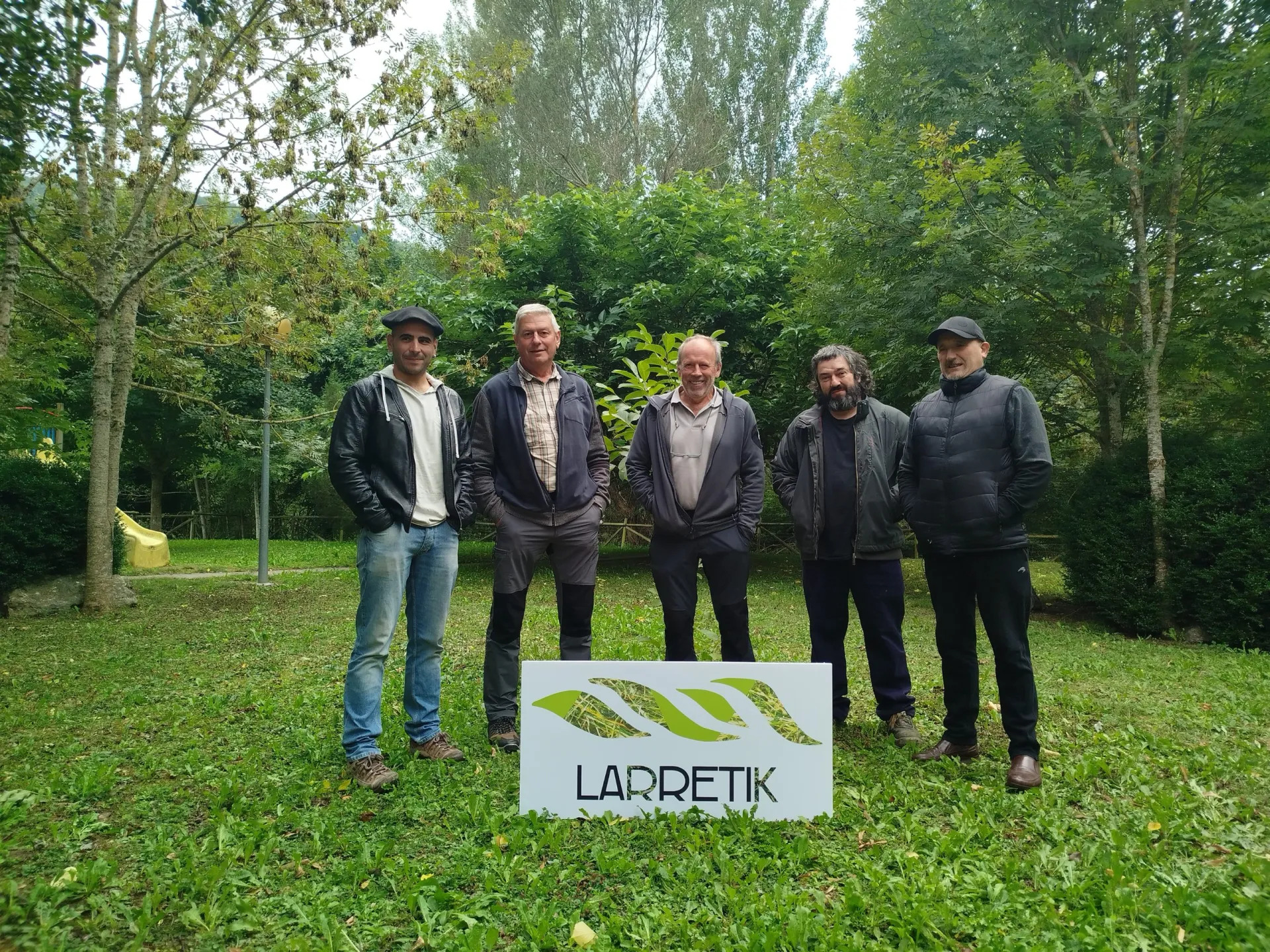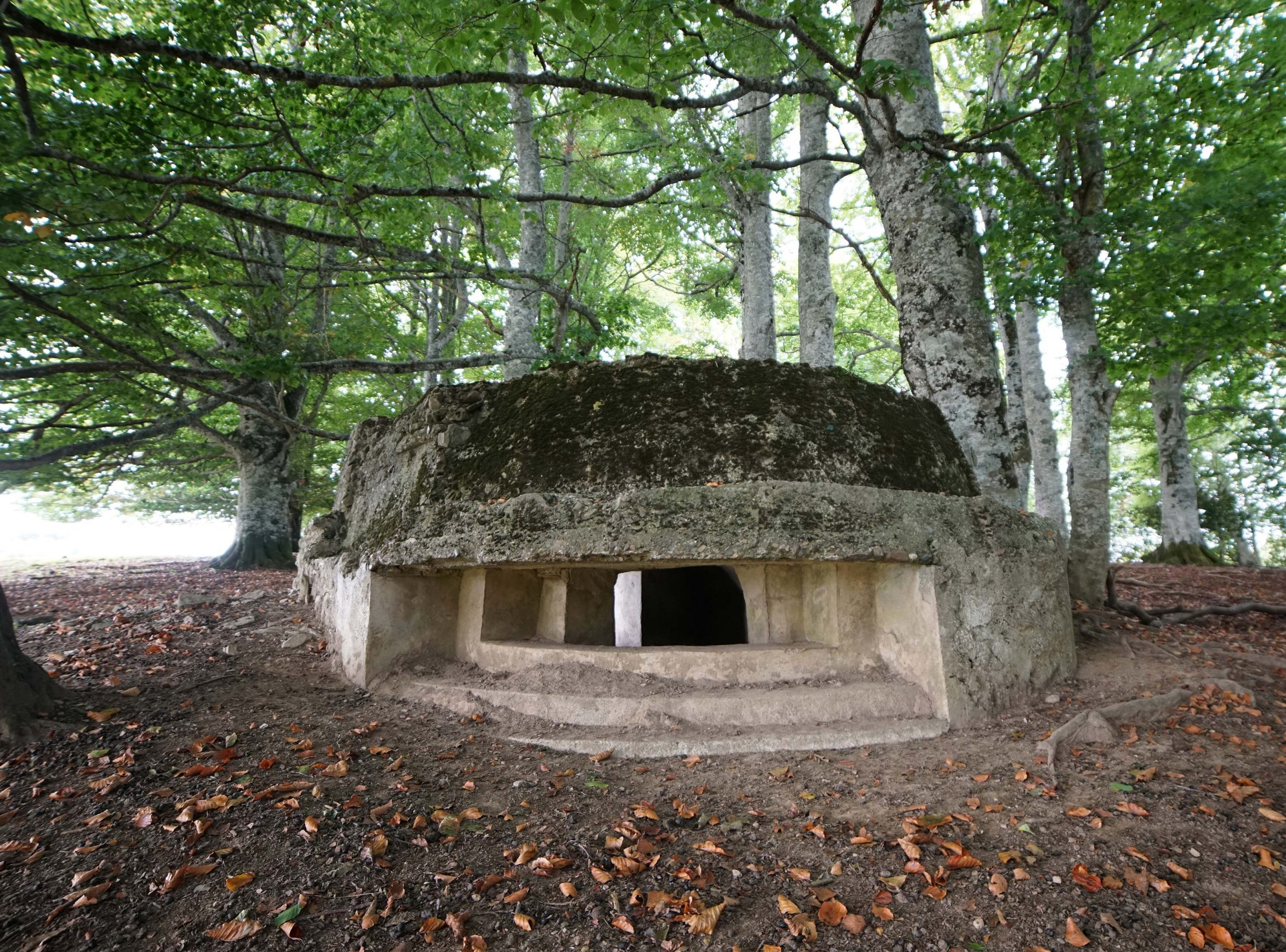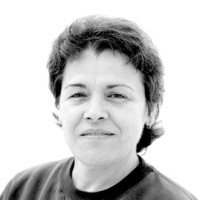"In the Pyrenees there is a strong community self-defence movement"
- In the Salazar Valley it is difficult to find an initiative, project or association without the impetus of Xabier Diaz-Esarte. It is one of the historical creators of the Ikastola Municipal de Pamplona and has exposed to thousands of imaginaries what the theater is. As a writer he has worked on his books these two passions, Salazar and children's theatre.

Idazlea, maisua eta antzerkilaria. 1978an abian jarri zen Iruñeko Udal Ikastolaren sortzaileetako bat izan zen, eta erretreta hartu arte ikastola horretako hiru ikastetxeetako irakasle eta antzerki taldeen zuzendaria izan da. Haurrentzako antzerki testuak biltzen dituzten bost libururen egilea da eta lehiaketa ugaritan izan da saritua. Bestalde, Zaraitzu ibarreko kulturaren ikertzaile eta dibulgatzaile sutsua da. Tiza negra (Klarion beltza) eleberria, Carreteras en el Valle de Salazar (Zaraitzu Ibarreko errepideak) kronika liburua eta 2021ean plazaratutako Zaraitzuko ipuin zahar eta berriak dira ibarrarekin lotutako bere idazlan nagusiak.
Are you from Ezcároz or Pamplona?
Since I was a child I lived in Pamplona because my father had work here, but we went to the town every weekend and vacation. His father started working in the office that Banesto set up in Ochagavía. One of the members of the board of directors of this bank was Salazar and decided to open a branch there in his town. Then the father was transferred to Pamplona and the house we had in the Ensanche became a sort of consulate of Salazar. Those who came to the doctors, to buy, to make papers, went through our house.
Despite living in the city, I have always had very close life in the village. All our family members have always been farmers or farmers, and today some young people in the family have decided to continue their profession. One of them is the youngest pastor who goes down to the Bardenas, for example. He began to descend at the age of 19, because he decided so. It currently has 1,500 sheep and its brothers, cows and mares.
How was his first contact with the Basque Country?
He studied in the escorts and in his crown we were taught some songs in Euskera. One day I went home singing the song of the angel Miguel, believing it was Latin, and my mother told me it was Basque. So I knew that language existed, and even my mother knew it. To me, it was a revelation. From that moment on, I was going with my ears standing up to the people and everywhere to see what else I needed.
Then, at 10 years old, I went to the Seminary. There, two or three priests met with Basque priests every Sunday. Over 200 people, and I was coming in there as well. Then I started studying Basque based on high school, in the classes taught at the School of Commerce. Carlos Garaikoetxea sat next to me. I wanted to study Journalism or History in Pamplona, but they did not catch me and in 1970 I went to Barcelona to study Anthropology, because I wanted to be a Basque anthropologist. It was a very lively, politically very moving time. A few months later I returned here and decided that my place was in the Basque Country. We left university and headed to Gorriti with the Basque priest Jon Arrizibita to learn Euskera. It was very funny. He was clearly opposed to Franco. Once, as punishment, he was sent to a town in the Bank. He insistently began to give the Sundays preachers in Basque, until the locals got angry and returned to Gorriti.Trabajaba with a Copelech truck because they worked leftist priests. I spent a year there and then studied Magisterium.
.jpg)
"One day I went home singing the song of the angel Miguel, believing it was Latin, and my mother told me it was Basque, and even my mother knew it."
Did it start in political militancy at that time?
Yes. It was time for ETA separation and I started participating in theoretical meetings. I was in the Troskista-Marxist group that Eusko Bazterra refused violence.
My first action was to distribute some pamphlets. In the group, there were a number of mountaineers and climbers, and we had a big ikurrina that we were putting in iconic locations. Once the police came to register our place in San José Square, we managed to remove the ikurrina and deliver the closure to the nuns next to them to keep it. Some were Basques and they kept us in the convent for several months, until the danger passed. In this convent they also began to give Mass in Basque in Pamplona and we went for homeland. In addition, a choir and a music group were formed that moved every Sunday from town to town to offer Basque masses.
Our team met with the state team Revolutionary Communist League creating LKI. Subsequently, EMK joined the Communist Movement of the Basque Country and Batzarre was created. And there I've always been a militant, until two years ago.
Germán Rodríguez was part of that group and was a very friend. When I finished my master's studies, I worked in different places until my father offered me the opportunity to work in Banesto. I didn't know anything about accounting, and Germán was very good at it. He was very smart and he proposed to me that he teach me accounting, in exchange for me to teach him Basque. We spent a year on it.
And how did he get to Ikastola Municipal?Before I
started working at the bank came some friends with the proposal to participate in the creation of the Ikastola Municipal. The idea was to take Basque education out of private schools and integrate it into the public network. At that time it did not exist throughout the Basque Country. Most of this group were families from the ikastolas of San Fermín and Paz de Ziganda. Leftist and Basque militants.
On January 13, 1978, we started in Chantrea with about 200 children in the classrooms that Nun Kanosian left in her school. These nuns of Italian origin were very pledged and locked up in all the social salsas of the neighborhood.
It was a special political moment in Pamplona. There was a very progressive city hall and, in addition to the ikastola, they opened the way to implement Andraize, children’s schools and many other initiatives.
I, to tell the truth, had no vocation as a teacher, but nothing else I got involved in the project.
How does that principle remember?
Just as beautiful as hard. It was about reaching as many neighborhoods as possible. It was a success. Every year more groups were being created there and here, and we always had to look for locals. It was a hard pilgrimage every year. I don't know how the parents endured so much, but they were parents of another time, of course! One year, for example, we spent almost three weeks teaching at Plaza del Castillo, as a protest, because we had no place.
At the level of Euskal Herria, the Ikastola Municipal was huge, as it managed to integrate teaching in Euskera into the public network, as well as the innovative pedagogy it used. The pedagogical renaissance was at that time in full boiling. There was a lot of activism and all of that was put into practice in our ikastola.
All the members were pioneers and we put into practice all kinds of initiatives that reached our manos.Las girls and the boys were together, something quite new at that time, we delayed the process of writing, we did programming and materials. We were in this for about ten years. The books, all the tokens -- we would approach todo.Era a very practical and active methodology. We started doing all kinds of street parties: Olentzero Eguna, Carnivals, Camping... At the end of the course we took the children and went to the mountain to do a week of hiking. We were in the early morning at the ikastola and there we were until seven in the afternoon, full of emotion, because it was a great challenge.
I immediately started giving theater and then it was agreed to be part of the school program. We were doing more and more things. For ten years I was giving theater in the three centers of the Ikastola Municipal, Hegoalde, Axular and Amaiur.Cada year I had twelve groups and mounted two different plays in each colegio.El empty of madness, but very nice.
What are the benefits of theatre?In
addition to body expressiveness, collaboration, teamwork, involvement, complicity… Theater can be, in some cases, the perfect resource for not having to resort to a psychologist.
Is it being given little importance at present?
No doubt. Interests have been diverted. Art and creation are left out of the current system escolar.En its day, the Department of Education of the Government of Navarra gave great support to the promotion of theatre groups in Basque in schools and institutes. The extraordinary technician Xole Erbiti gave him tremendous momentum. At first, as a competition and then as a meeting, a very intense movement was achieved. They put buses on us and gave us a little money to go to other towns. Lesaka, Bera, Leitza, many places in the Region of Pamplona, Irurtzun... and we also had the opportunity to meet the members of their groups. That was terrible for the students.
His other passion is the diffusion of Salazar's history and culture. He has recently published a collection of old and modern tales. What will we find in it? In
total there are 53 stories, in Basque and Spanish, some of them written in Zarauz Basque. On the one hand, I took the stories rescued by Azkue's Mª Resurrection, Arturo Campión, Federico Garralda and Zoilo Moso, and on the other, I went village to town collecting the stories told by the older neighbors. Finally, thirteen accounts of today (XXI. Those of the 20th century) I have added them, those that deal with contemporary issues.
In the traditional tales, the mythological beings – witches, films, Sanson, Basajaun, Gartxot, Mari… – and the animals – axeria, bear, wolf, crow, dove, bird of Orhi… – are protagonists and, although in the field of historical memory, those based on the trades – travelling pastor, almadier, smuggler….
.jpg)
"Some young people want to go to the village of their parents. It's a small number, in Salazar it can be about 20 young people. They're few, but ten years ago it was 0."
Would you highlight any?
No doubt, Gartxot, the bard of Izalzu, written by Campión 104 years ago. It is a story that has exceeded the limits of the valley. The film and comic book of Asisko, the song of Lertxundi and the outreach effort of Gartxot Ekimena have contributed decisively to its dissemination. It is a very dramatic story, but its message is universal: to defend the culture and identity of a people until the last consequences in the face of the impositions of others.
How do you see Salazar today?
Unfortunately, the image we give is that of depopulation and sadness. Some people will think it's not worth living there because we're always complaining. It is a raw reality, that is true, but, on the other hand, it should be noted that in the last eight to ten years the people there have carried out a deep process of reflection Living Pyrenees. Driven by the group. Despite the harsh situation, they have not given in and managed to put the reality of Pyrenees on the agenda of Navarre politics. Many people have been involved at different levels. A pessimistic, passive or apathetic attitude prevailing so far, and Pyrenean youths living in Pamplona are beginning to become involved in projects to defend and revitalize the valleys. Some young people want to go to the village of their parents. It is a small number, in Salazar it may be about twenty young people. They are few, but ten years ago they were zero. There is a lot of talk in the Pyrenean valleys about this, and there is a strong collective empowerment movement. There is an interesting movement of community awareness and self-defense.
In Ochagavía, for example, some young people have laid Basque sheep and pigs, others are making cheese and have created a company for active ageing. It's a completely new phenomenon. It cannot be said that the future is guaranteed, but at least the birth rate has increased slightly. There have been several years in the entire valley without newborns, and in the last ten years there is at least one replacement rate.
What can be improved?There are
many things that can be done in favor of young families: it is difficult to find housing, the prices of school canteens are expensive, there are many deficiencies in school transport, we have to adapt the legal minima... An example of this is the children's school which was opened in Ezcároz with European economic aid. They made it very nice, but then they closed it down because of the shortage of children. For a whole closed year, families had to hire a person and fix it on a shoreline to serve these children. Huescan had open classes with just one child and not here. After many battles, we eventually managed to expand. Now there is a nice group, thirteen or fourteen children os.Incluso in the conditions of the teaching staff for a long time that it was not possible to have contracts for a minimum of three years, and that stability has been greatly noticed. Some have bought and rented houses in their villages.
We must take account of the reality of Pyrenees and adapt legislation, quantities and everything else.
The Pyrenean valleys of Aezkoa, Salazar and Roncal would be a demographic desert of 3.8 square kilometres of population density (with an average of 68.1 inhabitants per square kilometre). In addition, 6.3% of this population would be older and the eastern Pyrenees would be an... [+]
Morning news. The ski resort at the top of Irati, managed by the Public College of Zuberoa, has decided to proceed with the final sawing, as they will be in snow again this year. I remember that about twenty years ago, in a special issue of Pyrénées Magazine, they announced... [+]
If you look at the Pyrenees on a map, they're like a line. Moreover, if someone tells us to paint the Pyrenean mountain range, we would surely plant the mountains together, although it looks something like what in English they call skyline. This image of the saw allows us to... [+]









_Glaciar.png)











